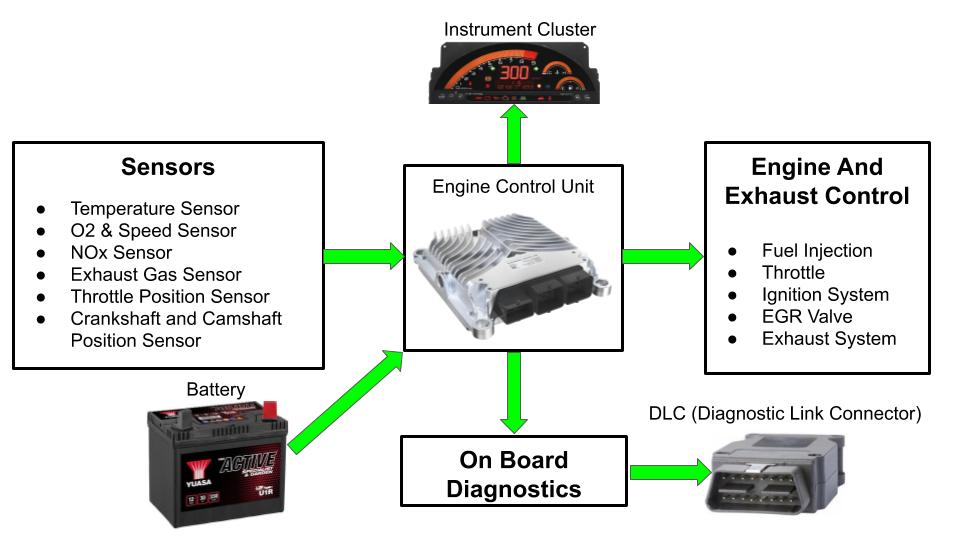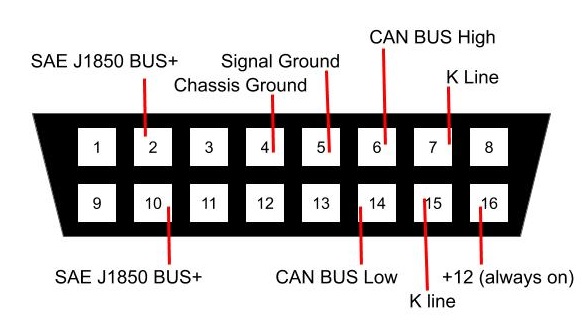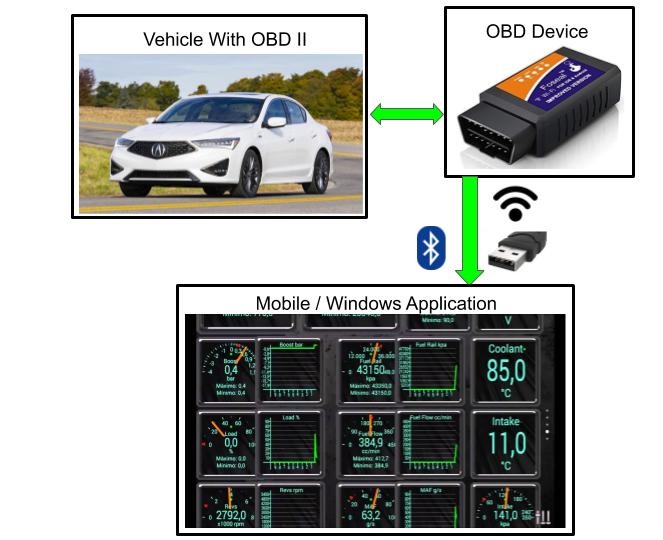What are On Board Diagnostics Scanners?
OBD or On-Board Diagnostics scanners or device’s initial design was to control the vehicle emissions. But nowadays, OBD Scanners are also used to monitor critical engine components’ performance and other car parameters such as speed, torque, and fuel parameters.
In BS6 and Euro6 vehicle norms, OBD-2 devices are mandatory. Click this link to know in detail about AdBlue Liquid.
Applications of OBD Devices?
According to automotive norms, all components that impact vehicle emission or are connected to ECU (engine control unit) should be monitored and diagnosed. On-Board diagnostics can monitor these connected devices.
Apart from monitoring, OBD devices can have the following applications.
- Indicates engine check error in the instrument cluster when a problem occurs in the engine system.
- We can use an OBD scanner with a mobile application to monitor the vehicle status and various parameters such as vehicle speed, torque, RPM, fuel parameters, battery status, etc.
- Allows mechanics to diagnose the complete vehicle by showing diagnostic trouble codes (DTC).
- Log vehicle engine data to understand vehicle performance and driver behavior.
How On Board Diagnostic Devices Works?

A vehicle ECU gets input from sensors. These sensors are connected to various vehicle components and control the engine’s functioning.
We connect OBD scanners to the vehicle ECU in the On-Board Diagnosis system. OBD scanner gets vehicle information using CAN Protocols and displays this data over a smartphone or OBD display device.
OBD sends an error code to the vehicle instrument cluster if a system or component starts malfunctioning. Detailed error code can also be determined using Diagnostic Link Connector (DLC).
Types of OBD Devices
Vehicle manufacturers use the following two types of onboard diagnostics devices to get data from connected engine ECU.
OBD1
OBD1 is the first generation on-board diagnostic device. For OBD1 devices, every vehicle manufacturer has its proprietary connector and set of codes.
For different vehicles, mechanics have to buy separate devices. OBD1 scanning devices were very costly.
OBD2
OBD2 devices are a norm after SAE and ISO issued ECU and diagnostic scan tool communication protocols in 1990. After that, it becomes mandatory for manufacturers to use standard diagnostic connectors (SAE J1962) and communicate via a standard communication protocol.

How to Read OBD2 Data?
OBD2 supports various standard parameter IDs (PIDs) along with DTC codes. These PIDs can retrieve different data (speed, RPM, throttle position, fuel consumption, etc.) from the vehicle.
Steps to read Vehicle Data using OBD2

Data from the vehicle can be received in the following steps using OBD 2 Connector.
Step-1: Connect the OBD2 device to the vehicle. You can buy Bluetooth or Wi-Fi-based OBD devices from Amazon.
Step-2: Download the OBD2 application for android/IOS/windows smartphones.
Step-3: Connect the application with the OBD2 device
Enjoy the Live Data from your vehicle !!
We will keep updating more details on “On Board Diagnosis” used in vehicles. Add your comments, questions, or suggestions on OBD devices in the comment box.

Add a Comment